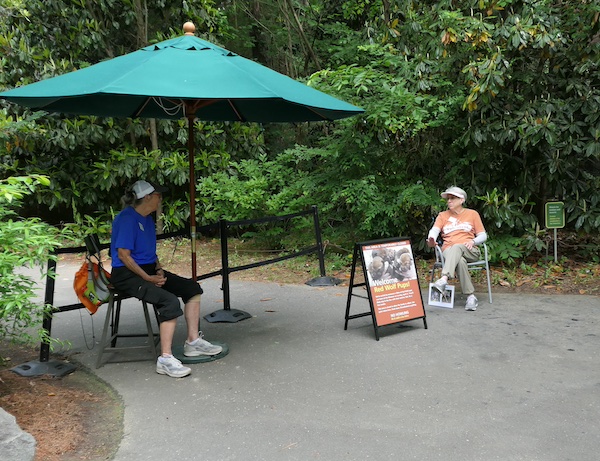Top Photo: Tree swallow rests on a snag between nesting duties.
Tree swallows have chosen to nest in the oversized (for them) wood duck nest box in our wetlands. We’ve hosted wood ducks, great-crested flycatchers, raccoons, European hornets and tree swallows as well as some creatures I may not be aware of. All are welcome. This is the third year in a row for the swallows.

Mulberries are having a bumper year at the museum and the birds are loving it.


Besides the mulberries, mahonia berries have done well, and thirteen year cicadas are adding much protein to local birds’ diets this year. Our bird feeders have barely been touched by our resident birds this spring.


While on the subject of cicadas, they’re here to mate. Once the mating is done the female will lay her eggs in slits carved by herself in tree branches. When the eggs hatch, about a month and a half later, the nymphs fall to the ground, burrow in and begin their subterranean period of sucking on tree roots, not to surface again for thirteen or seventeen years. The adults, having spent only several weeks as such, perish, if not first becoming prey to some bird, mammal, reptile or amphibian, in which case they perish anyway.



A red-bordered emerald moth was seen clinging to the cedar siding on the restroom walls in Explore the Wild.

Strange appearing and delicate plume moths are easy to identify as to family, not necessarily to species. This one looks like white plume moth (Pterophorus pentadactyla). The larvae feed on bindweed or morning glory leaves, the adults on nectar.

A spotted sandpiper stopped in briefly to rest and feed in our wetlands. With all the rain we’ve had lately the shorebird had little choice but to spend its entire visit on a small island in the pond, high water and no mud or shoreline to forage upon.

Not everything has been well this spring. Serviceberry or shadbush, is suffering from the effects of cedar-apple rust, the berries become inedible. The infection travels back and forth from eastern red cedar (Juniperus virginiana) to members of the apple family.

A spicebush swallowtail butterfly’s location was pointed out to me by Exhibits Tech, Dakota and I took care of the rest.

Gray catbirds have a lot to sing about this season. The abundance of food so far this spring should allow for successful nesting.

Finally, our volunteers help keep the ship afloat here at the museum. Without them it wouldn’t be such a smooth sail.
